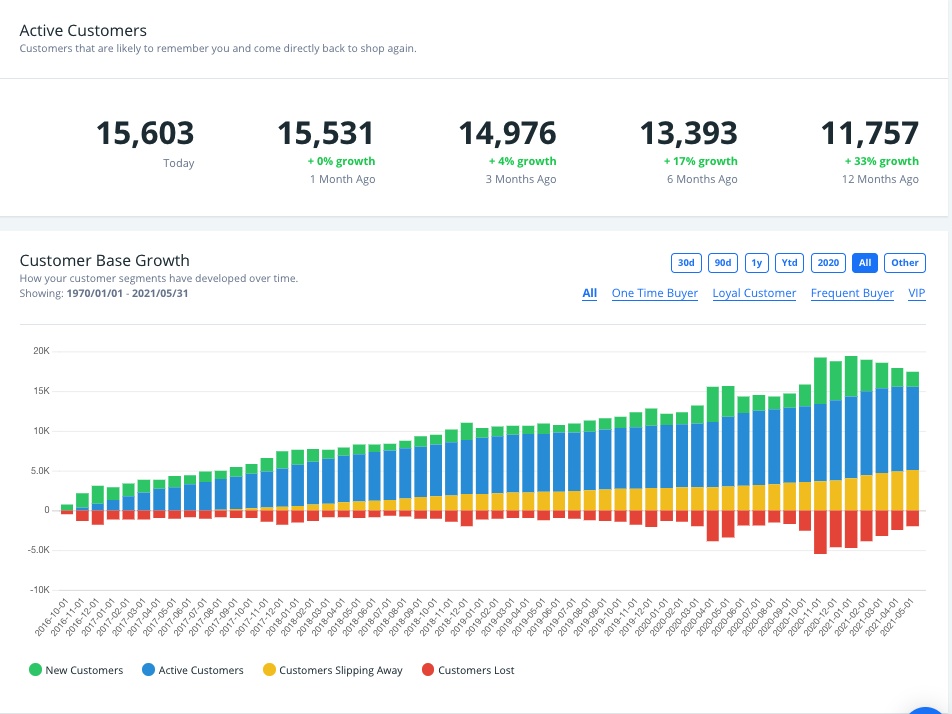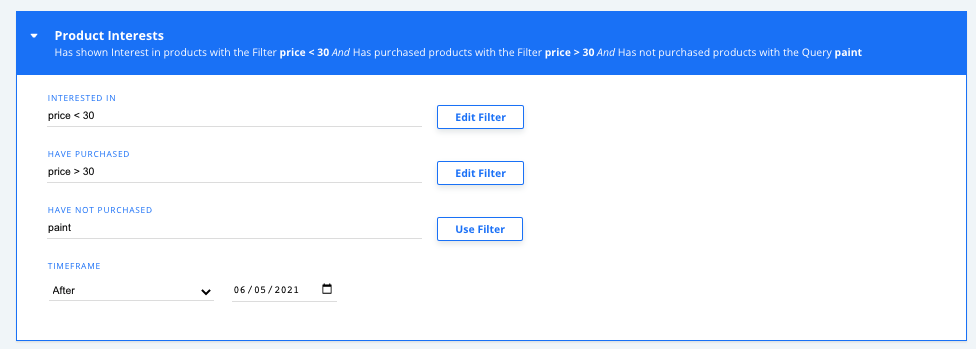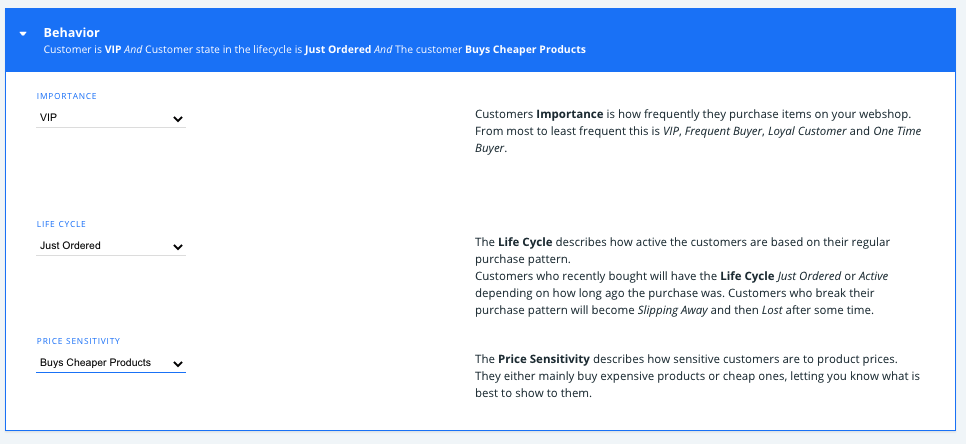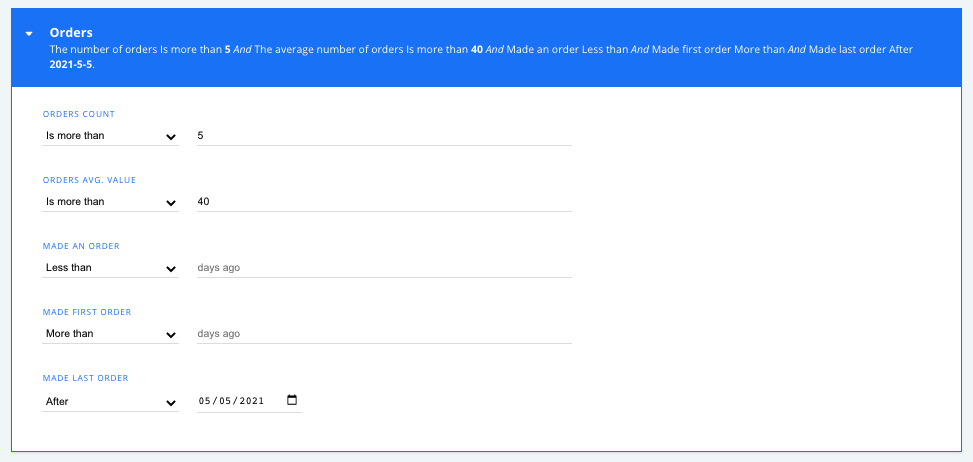Using Audience as a Customer Data Platform (CDP)
With the ability to define, target, and profile customers with real-time data, Clerk.io Audience can be leveraged as a highly functional and customizable CDP. Learn more about Clerk.io Audience profiling features below.
Active Customers & Customer Base Growth
Active Customers and Customer Base Growth are easy-to-use overviews of your customer data, providing topline analytics about your Clerk.io Audiences.
Active Customers includes key volumetrics of your entire customer base, highlighting your total number of active customers, and their growth over the past 1 to 12 months.
Customer Base Growth visualizes the growth of your customer audience over time, with the option to look at all customers or individual key Audiences such as One Time Buyer or Loyal Customer.
- Within the Customer Base Growth chart, you’re also able to refine the date range to assess Audience growth within any desired timeframe.

Audience Insights
The Audience Insights Dashboard, is a built-in tool that creates a section of Customer Value(One-Time Buyer, Loyal Customer, etc.)
Of course, further customising these audiences is possible by creating your own Audiences.
With the Audience Insights, you can automatically profile then target customers based on their assessed revenue value and risk of churn, without need for any further customisation.
Creating New Audiences & Audience Segmentation
To fully leverage Clerk.io Audience as a CDP, creating your own custom Audiences is essential. Head over to my.clerk.io and choose Audience > Audiences in the left-side menu, then click " Create New Audience" at the top right corner to get started.

- Product Interests and Previous Purchases
- Powered by Clerk.io’s Visitor and Order Tracking, you have the ability to refine your Audiences based on their product interests and past purchases.
In the Product Interests section, you can filter various product attributes of products customers are interested in, have purchased, and/or have not purchased.
Finally, you can select a specific timeframe that members of this audiences have to qualify. For example, an Audience made up of customers who have purchased products under 30 DKK, since May 6, 2021.
- Powered by Clerk.io’s Visitor and Order Tracking, you have the ability to refine your Audiences based on their product interests and past purchases.

- Audience Importance, Life Cycle, and Price Sensitivity
- Continue to filter your Audience using data around their Importance (VIP, One-Time Buyer, Loyal Customer, etc.), where in the customer Life Cycle they exist (Just Ordered, Active, etc.), and finally their Price Sensitivity (Buys Cheaper Products, Buys Expensive Products, etc.).

- Audience Order Details
- Finally, select Audience criteria based on customer data around past orders, including number of orders made by each customer as well as average order value. You can also filter by recency of any customer orders, and set a timeframe for the first and/or last orders made by customers in this Audience.

After refining your Audience of interest with the above filters, you can export this data as a CSV, and sync with your integrated mail platform(s).
Exporting and Synchronizing Audience Details
After creating, refining, and profiling your audience, you can always download and integrate your customer data as needed.

In the “Export” section, you have the option to download your newly created Audience customer data as a CSV. You can also toggle on “Sync” to sync your new custom Audience with your already-integrated Audience platforms.